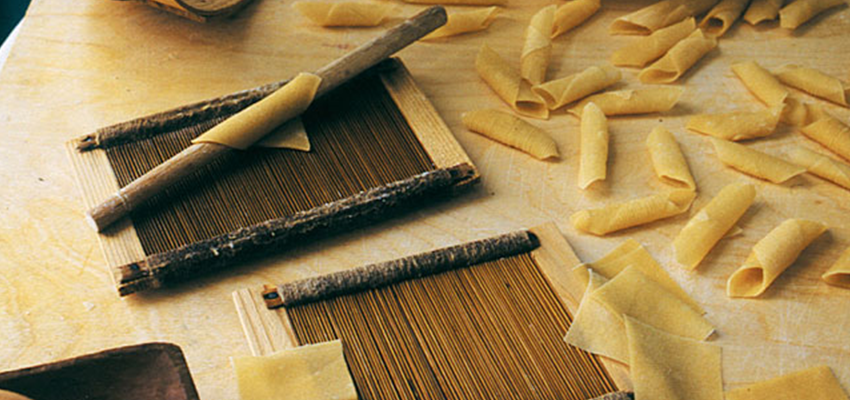The best spice that can be added to any dish is a story, and the tale behind garganelli pasta is one of pure ingenuity.
Back in 1725, garganelli pasta was born in the Emilia-Romagna region of Italy. In the home of Cardinal Cornelio Bentivoglio D’Aragona, the cook was preparing a Cappelletti dish for a large number of guests that were attending a meeting that the Pope was hosting at the estate. At the time, cats were a staple around the kitchens and country mansion estates. While preparing the meat stuffed pastas for the guests, the cook had left a large portion of the meat filling unattended. The cats took notice, and they feasted on the filling leaving not enough to satisfy the cook’s demand for all her guest. Realizing she had tons of small squares of pasta left behind, she got creative. The cook grabbed a couple of the twigs used to light the kitchen fire and a tool used for weaving hemp to make clothes and other linens and got to work. She placed the pasta on the weaving tool and used to the twig to individually wrap the pasta around it. The weaving tool gave the pasta striations on the outside, and the grains of the twig gave the pasta additional parallel ridges.
The traditional dish that is made in Emilia-Romagna region with this pasta is known as prosciutto e piselli which includes cooked onions, green peas and small cuts of prosciutto. The onions, peas and prosciutto are to be cooked in a pan with extra virgin olive oil separately. The garganelli pasta is to be boiled with water and chicken broth. When the pasta is drained and ready to be served, a small amount of the chicken broth and water mixture is to be added to the pasta, peas, onions and prosciutto. A small topping of Pecorino cheese is a perfect exclamation point to this wonderfully delectable dish.
If you’re looking for the perfect Egg Garganelli Homestyle Pasta, look no further than ours.

